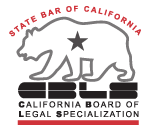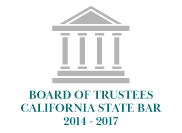When it comes to passing on your assets, your retirement savings account is likely one of the largest items to consider. Your children are a natural choice as beneficiaries. Many people consider this a simple wealth transfer method when doing estate planning.
There are drawbacks to this plan, however, particularly for people whose children are not yet adults.
Does the Law Allow Minor Children to Be Named Beneficiaries?
Choosing an underage person as the primary or contingent beneficiary of your retirement savings account is legal. That said, a minor child is not allowed to handle the money they inherit.
The court is likely to appoint someone to serve as a conservator or guardian to fulfill that duty. This can slow the process and eat up resources you would prefer to be passed on to your loved ones.
In addition, the court may choose someone you wouldn’t approve of. For this reason, if you’re leaving your retirement savings account to a minor child, your estate plan should lay out your choice for a guardian or conservator.
Distribution Timeline and Minimum Distributions
The law has something to say about the timing involved in passing along a retirement account. The SECURE (Setting Every Community Up for Retirement Enhancement) Act generally requires that retirement accounts pass in full to a beneficiary within a decade of the account owner’s passing.
The account owner’s underage children are an exception to this general requirement, however. As Eligible Designated Beneficiaries (EDBs), minor children are allowed to receive a retirement account for up to a full decade after they reach the age of majority, which is 18 in California.
However, between the death of the account owner and the child turning 28, the child must receive some payments from the retirement account. These are known as required minimum distributions, or RMDs. These payments are typically placed in a limited access account controlled by the conservator or guardian until the child reaches 18. The specific rules for the RMD amounts are complex. The RMDs continue until the beneficiary turns 28 and the remainder of the retirement account is transferred in full.
Tax Implications
Distributions from the retirement account are taxable events. The child receiving them is required to pay income tax on the money received through required minimum distributions.
In most cases, this is beneficial for two reasons. First, RMDs are typically small because minor children have long life expectancies. Second, young people are generally in a lower tax bracket than older people.
In addition, the smaller payments can lead to a large sum of money distributed as taxable income in the year the child turns 28.
Financial Immaturity and Full Distribution of the Retirement Account
Another drawback to consider in choosing a minor to be your retirement account beneficiary is the potential for poor financial decision-making.
RMDs are overseen by the guardian or conservator until the child reaches the age of majority. At that point, the beneficiary gains control of the account. Your child, at 18, would have the power to empty the retirement account immediately without anyone being able to question the decision.
Many parents would be rightly concerned about their children receiving a large sum of money even if they were around to give them advice. Leaving your child to make that decision alone could be too much to ask.
Can a Trust Mitigate the Problems of Choosing a Minor Child as Beneficiary?
Trusts are powerful tools that can help you retain a level of control over how your assets are distributed. By creating a trust to receive your retirement account at the time of your passing, you can address some of the issues involved in passing the funds directly to a minor child.
The trust will be created for your child with rules intended to improve the circumstances under which the funds are distributed. There are legal requirements that must be met to enable the use of a trust known as a see-through trust in this capacity. See-through trusts come in two varieties, the conduit trust and the accumulation trust.
The Conduit Trust
One of the primary differences between conduit and accumulation trusts is how they handle the required minimum distributions.
Under a conduit trust, RMDs must be given to the child or used for the benefit of the child when those funds are received by the trust. The remaining funds keep their tax-deferred status and are protected under the terms of the trust.
The conduit trust can solve another major issue, as well. The trust can be written to prevent your child from gaining total control over the asset when they reach the age of majority. The RMDs will pass by requirement, but the trustee will have the authority to distribute additional funds according to the child’s needs and your instructions.
The decision-making party can be one of your choosing, rather than relying on the hope that your child will be ready to make prudent financial decisions at a young age.
A conduit trust doesn’t cancel the requirement that all of the retirement funds must be fully withdrawn by the 10th year after the minor child turns 18. Before that time, however, it protects the assets in the account, delays the taxation of those assets, and gives your child a chance to grow accustomed to financial responsibility.
The Accumulation Trust
RMDs are handled differently if you choose to establish an accumulation trust. This form of trust relies on the trustee to decide whether RMD payments should be retained by the trust, given to the child, or used on behalf of the child. This discretion can help in cases where creditors are seeking access to the beneficiary’s assets.
Like conduit trusts, accumulation trusts allow you some control over when your minor child gains access to retirement account funds. With an accumulation trust, the age of majority will not dictate the passing of assets to your child’s control.
All of the assets in the retirement fund must still be taken out in the beneficiary’s 28th year. If those funds are withdrawn to the trust, rather than being passed to the beneficiary, they are subject to the elevated tax rates applied to trust distributions. This is generally a higher rate than that affecting distributions from a retirement account.
Contact an Estate Planning Attorney for Assistance
The right plan requires an understanding of your goals and the factors surrounding your choice. At the Law Office of Janet L. Brewer, we can take you through your options or help you review or amend your plan. Call our Los Altos offices at 650-325-8276 to or send us a message to schedule a consultation today.








